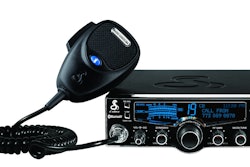FMCSA Senior Transportation Specialist Bryan Price offered data from the first year and a half of the Compliance, Safety, Accountability program during the first of three Federal Motor Carrier Safety Administration webinars that contends CSA is working.
The “violation rate per roadside inspection went down by 8 percent” in 2011, Price noted. “The driver violation rate went down by 12 percent. That was the biggest drop by far in the last 10 years,” which he called a “testament to the level of attention motor carriers are giving to … the importance of roadside inspections.”
Price went on to note research into the statistical correlation between the Unsafe Driving and Fatigued Driving BASICs and actual crash rates as evidence that the system is sound. But a new analysis disputes that correlation. It was conducted at the behest of the Alliance for Safe, Efficient, and Competitive Truck Transportation, a “group of shippers, carriers, brokers and other interested parties” formed to serve the shipping community relative to CSA’s potential impact.
Transplace Director of Engineering Dr. Inam Iyoob used a different statistical method than that used by the researchers commissioned by agency, which plotted crash averages at various percentile rankings rather than looking at individual carriers directly. Iyoob’s own analysis shows much more variation in crash rates among carriers at various percentile rankings in the BASICs, causing ASECTT to conclude that “FMCSA’s data cannot be used to predict the crash performance of individual carriers even though the FMCSA claims SMS scores are correlated to the average crash frequency of hundreds of carriers at each percentile integral. Consumers of freight transportation do not select ‘average’ carriers, they select individual carriers.”
Price contended that the system was sound. A third of all inspections recorded in 2011 were clean inspections, and 80 percent of carriers who received warning letters regarding their performance beginning in October 2011 were, as of May, doing better in the areas identified as potential problems.
Price responded to charges that too few carriers came under the umbrella of CSA with data on the Safety Measurement System’s reach. Out of a universe of 525,000 active motor carriers, he said, 200,000 had enough data in the system to populate one or more of the seven Behavioral Analysis and Safety Improvement Categories (BASICs) with a numeric percentile ranking. “These 200,000,” Price said, “are having more than nine in 10 of the crashes that are occurring out there. When we step back and look at our objective to reduce crashes … this kind of information gives us some level of comfort” that the system is working.
Titled “CSA: Proposed Changes to Improve a Solid Foundation,” the webinars, with repeats scheduled for Wednesday, June 27, and Thursday, June 28, were primarily devoted to educating motor carriers, owner-operators and drivers on proposed changes to the CSA Safety Measurement System. (Find a full summary of changes here.) You can register for one of the repeat editions of the webinar via the following links:
Wednesday, June 27, 2012, 10:00–11:30 a.m. (Eastern Time)
Thursday, June 28, 2012, 3:00–4:30 p.m. (Eastern Time)











